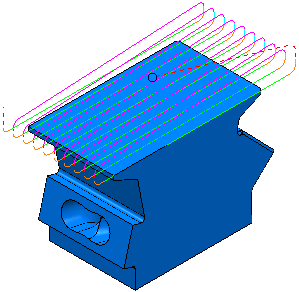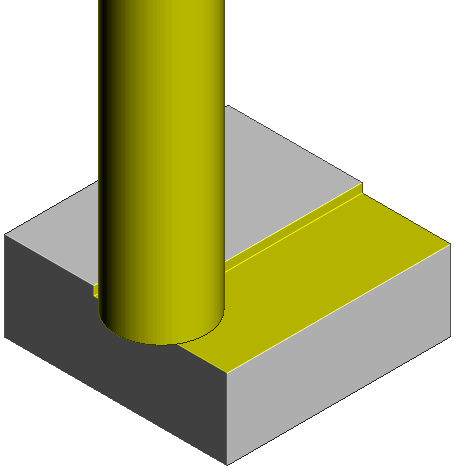Use the Feature Face Milling strategy to produce flat surfaces by guiding a large cutter over the surface of the workpiece specified by bounded or unbounded face features. This strategy enables you to machine multiple face features at different Z heights.
The cutter is a Face Mill consisting of a rotating holder containing turning inserts. The cutter spindle always has an axis of rotation perpendicular to the work piece surface. The geometry of the cutter only enables relatively small depths of cut. Face milling is commonly used to machine flat surfaces on ground vehicle powertrain components, engine blocks, and transmission valve bodies.

There are several pages associated with the Feature Face Milling strategy:
- Feature face milling — The main page used to specify a face milling toolpath.
- Finishing — Setting to specify a final stepdown depth of cut value.
- Raster — Settings to specify a raster area clearance style.
- Offset — Settings to specify an offset area clearance style
- High speed — Settings to control smoothing options to avoid sharp changes in tool direction when high speed machining. This page is only available for offset styles.
- Automatic verification — Settings to automatically verify toolpaths on creation.
The remaining pages are common toolpath strategy pages.
To create a Face Milling toolpath you must define a block and a tool. Face milling works with any tool and uses the flat end of the tool:
